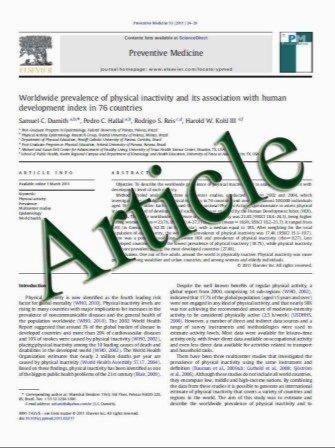Impact of clinical fractures on health-related quality of life is dependent on time of assessment since fracture: results from the FREEDOM trial
- نوع فایل : کتاب
- زبان : انگلیسی
- مؤلف : S. Silverman & H. N. Viswanathan & Y.-C. Yang & A. Wang & S. Boonen & S. Ragi-Eis & P. Fardellone & N. Gilchrist & P. Lips & M. Nevitt & S. Palacios
- چاپ و سال / کشور: 2011
Description
Summary In the Fracture Reduction Evaluation of Denosumab in Osteoporosis Every 6 Months (FREEDOM) study, women with incident clinical fractures reported significant declines in health-related quality of life (HRQoL). The largest declines were observed when the assessment was <3 months post fracture. The largest impact of incident clinical fractures was on physical function, and that of incident clinical vertebral fractures was on back pain. Introduction In the FREEDOM trial, denosumab significantly reduced the risk of new vertebral, hip, and nonvertebral fractures. We evaluated the effect of denosumab on HRQoL and the association between incident clinical fractures and HRQoL. Methods The FREEDOM trial enrolled 7,868 women aged 60–90 years with a total hip and/or lumbar spine BMD T-score <-2.5 and not <-4.0 at either site. Women were randomized to receive denosumab 60 mg or placebo every 6 months, in addition to daily calcium and vitamin D. HRQoL was assessed with the Osteoporosis Assessment Questionnaire-Short Version (OPAQ-SV) at baseline and every 6 months for 36 months. The OPAQ-SV assesses physical function, emotional status, and back pain. Higher scores indicate better health status. Results No statistically significant differences in mean change in HRQoL from baseline to end of study were found when comparing treatment groups. Compared with women without any incident fractures during the study, women with incident clinical fractures reported significant declines in physical function (-4.0 vs. -0.5) and emotional status (-5.0 vs. -0.8) at month 36 (P<0.001 for both). Importantly, time-dependent covariate analyses demonstrated that the largest declines were observed when the assessment was <3 months post fracture. The largest impact of incident clinical fractures was on physical function, and that of incident clinical vertebral fractures was on back pain. Conclusions These findings not only demonstrate that incident clinical fractures impact HRQoL but also contribute new information regarding the impact of these fracture events on HRQoL over time.
Osteoporos Int DOI 10.1007/s00198-011-1720-0 Received: 7 March 2011 / Accepted: 7 June 2011


